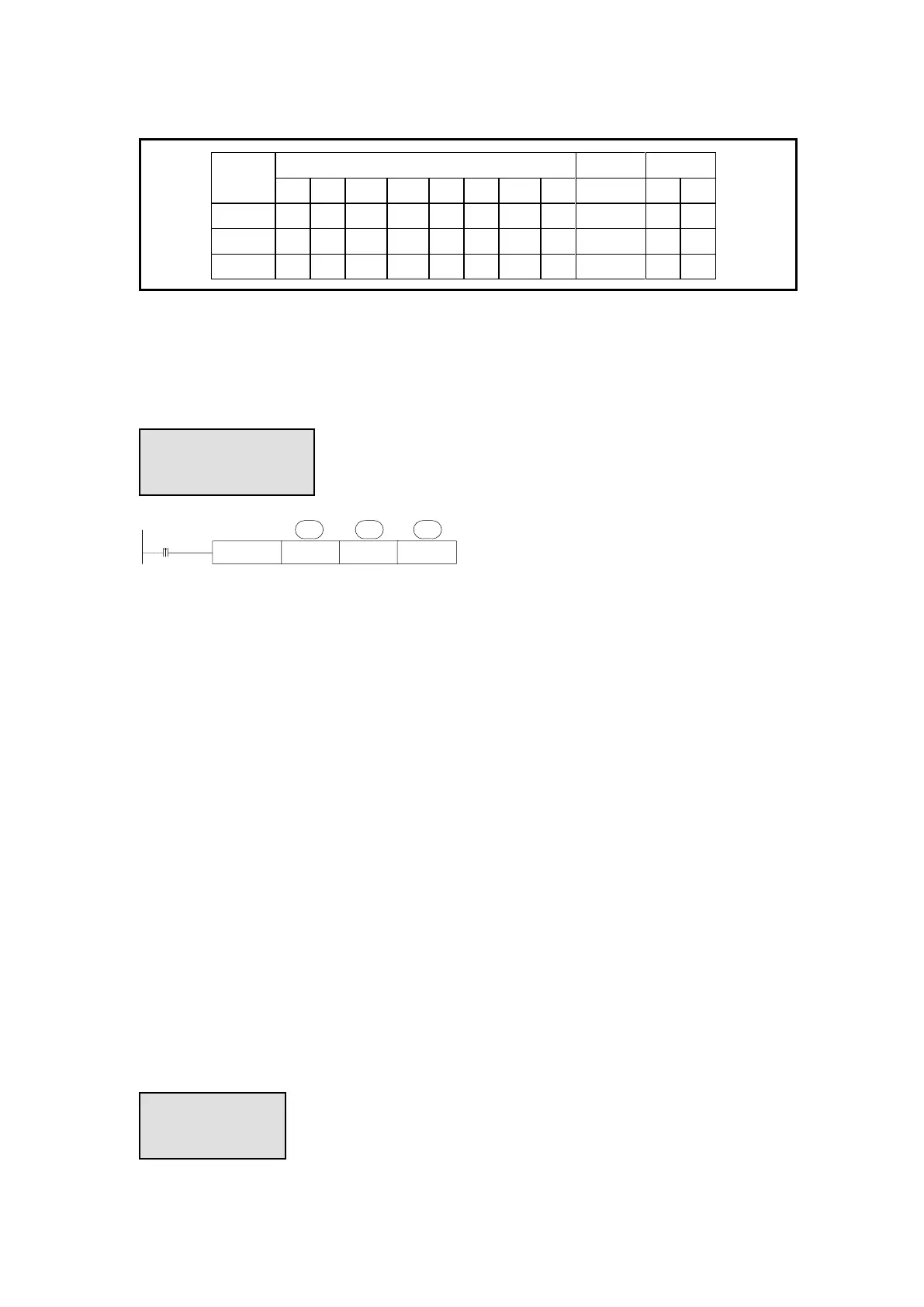3. suitable soft component
*Note: D includes D, HD; TD includes TD, HTD; CD includes CD, HCD, HSCD, HSD; DM
includes DM, DHM.
DS includes DS, DHS. M includes M, HM, SM; S includes S, HS; T includes T, HT; C includes C
HC.
MOTOS HD0 HD100
M0
S1·
S2·
K1
S0·
● when M0 is from OFF to ON, axis S2 will run in multi-speed incremental position mode or
absolute position mode with S1 parameters, S2 target position and speed.
S0: data starting address. Set the pulse position and speed.
S1: parameter starting address. Set the running mode, running segment and
acceleration/deceleration time.
S2: axis no. N, N range is from 1 to 10.
● servo is enable, speed register (SD2032+60*(N-1)) is 1000, when M0 is from OFF to ON,
(SD2032+60*(N-1)) changed to S0 segment 1 speed.
When the motor is running, modify (SD2032+60*(N-1)) can cahnge the speed, the motor will
change to new speed with acceleration/deceleration time. The modified speed is effective for the
present segment.
If the speed is 0, the motor will stop with acceleration/deceleration time. As the speed becoming 0
before reaching the target position, the running flag (SM2001+20*(N-1)) will not reset. At this
time, set new speed in (SD2032+60*(N-1)), the motor will run again.
● there is acceleration and deceleration time when the speed changed in each segment, the slope
is same to the first segment.
● the present segment register (SD2016+60*(N -1)) can show the pulse is running in which
segment
● when it is running, it can not modify the SD register to change the target position,
acceleration/deceleration time, running mode and pulse segment numbers.
